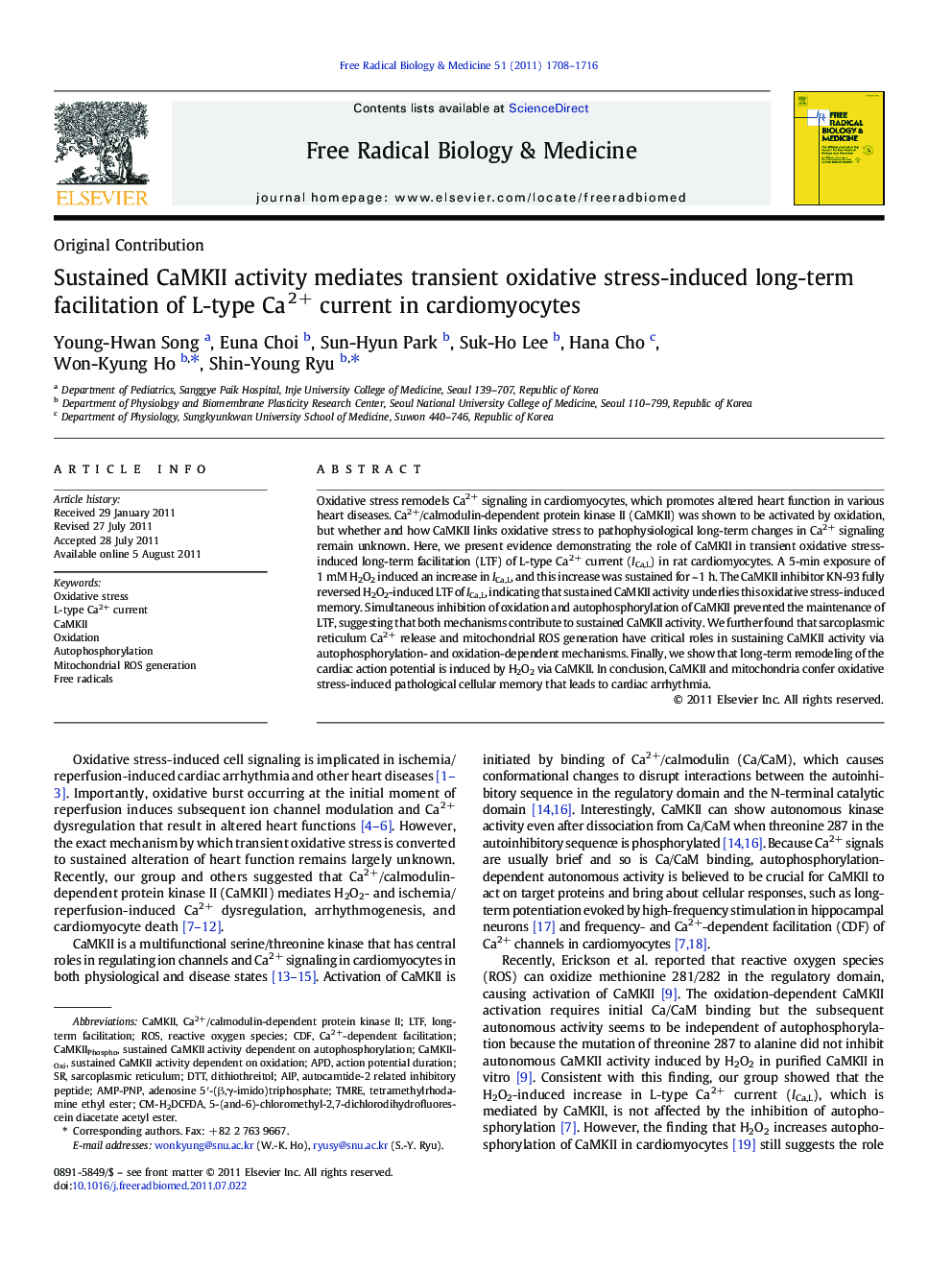| Article ID | Journal | Published Year | Pages | File Type |
|---|---|---|---|---|
| 10738478 | Free Radical Biology and Medicine | 2011 | 9 Pages |
Abstract
⺠We uncover the mechanism of cardiac arrhythmia induced by oxidative stress. ⺠Transient oxidative stress induces long-term facilitation of L-type Ca2+ current. ⺠The facilitation of L-type Ca2+ current is dependent on sustained CaMKII activity. ⺠Autophosphorylation- and oxidation-dependent mechanisms sustain CaMKII activity. ⺠SR Ca2+ release and mitochondrial ROS generation regulate CaMKII activity.
Keywords
LTFAIPCM-H2DCFDACDFTMREAMP-PNPDTTAPDCaMKIICa2+/calmodulin-dependent protein kinase IIL-type Ca2+ currentROSadenosine 5′-(β,γ-imido)triphosphateAutophosphorylationtetramethylrhodamine ethyl esterOxidationlong-term facilitationOxidative stressdithiothreitolFree radicalsSarcoplasmic reticulumAction potential durationReactive oxygen species
Related Topics
Life Sciences
Biochemistry, Genetics and Molecular Biology
Ageing
Authors
Young-Hwan Song, Euna Choi, Sun-Hyun Park, Suk-Ho Lee, Hana Cho, Won-Kyung Ho, Shin-Young Ryu,
